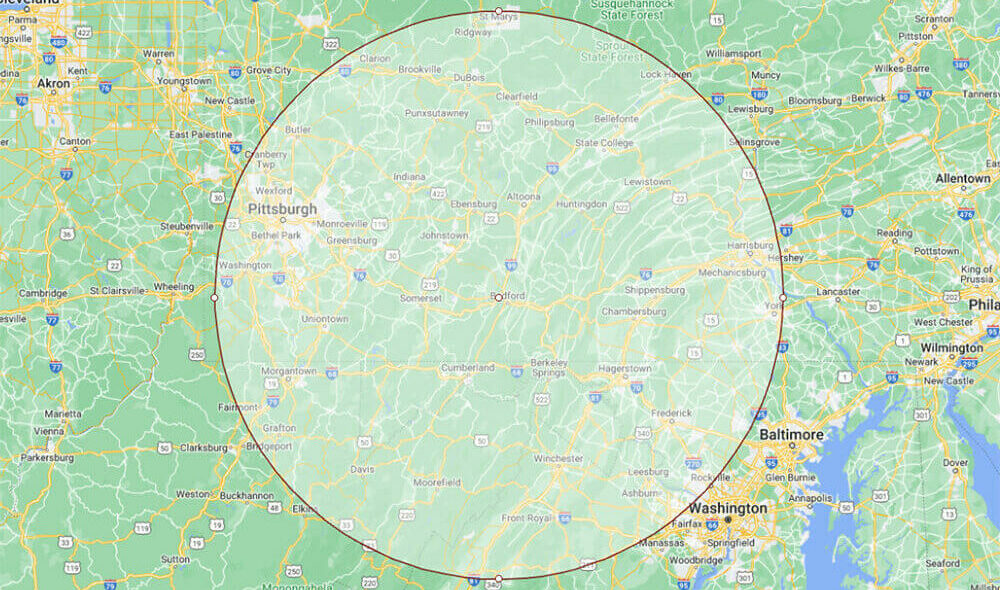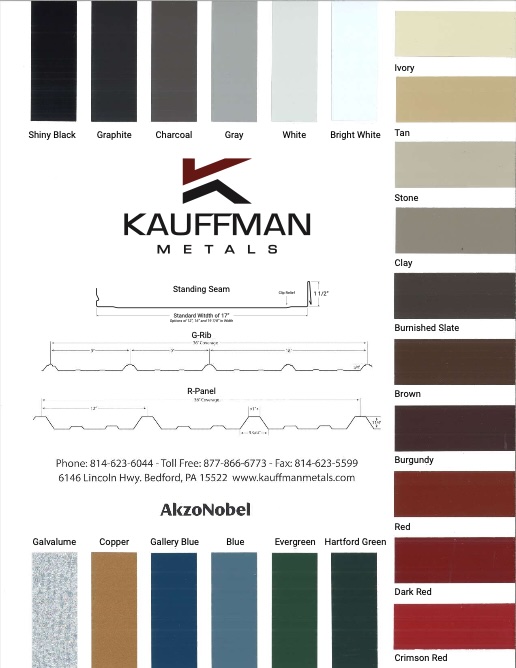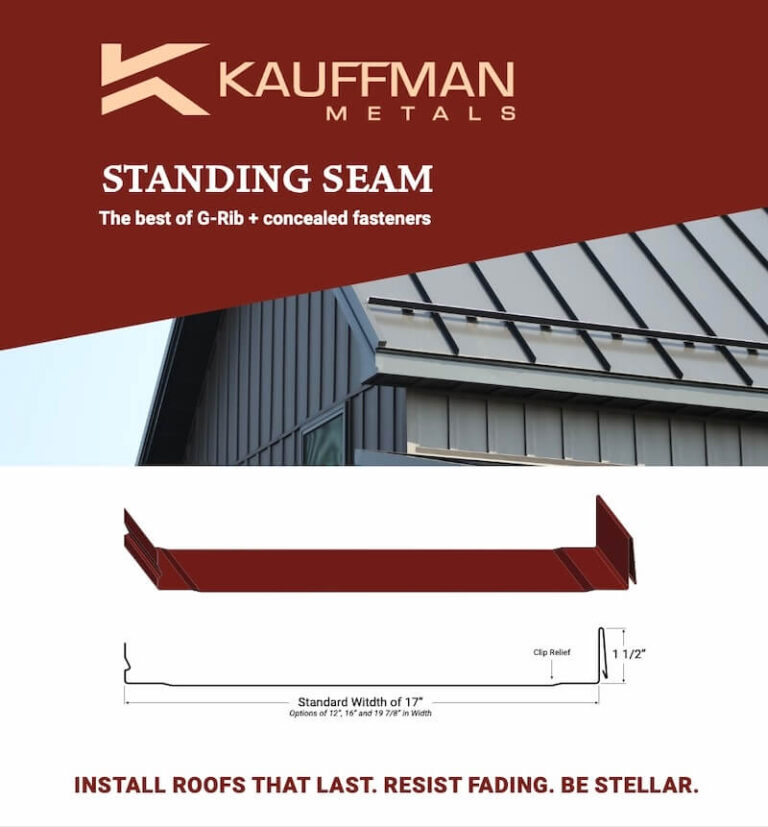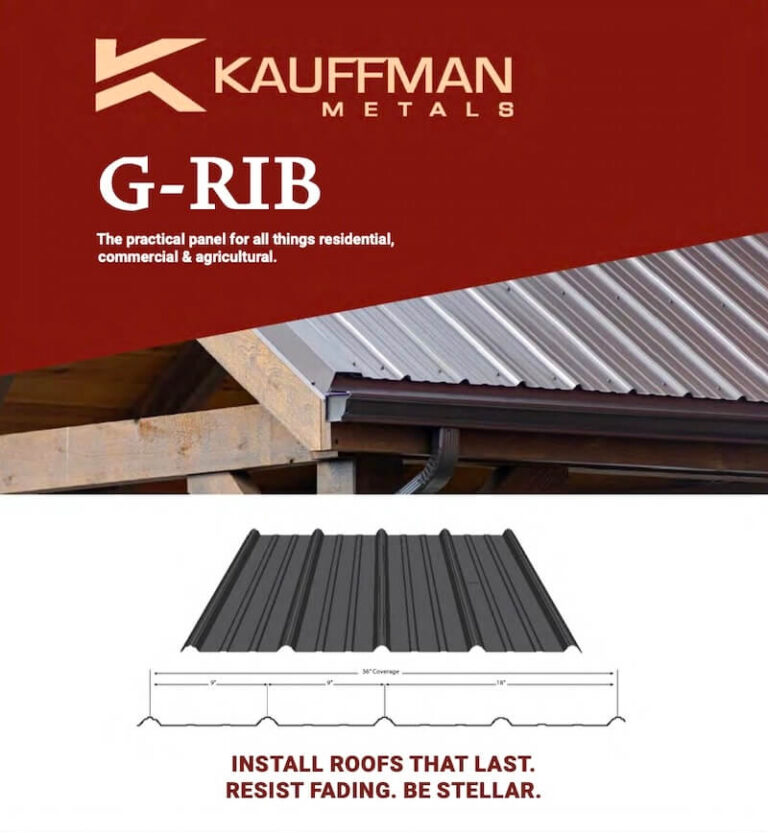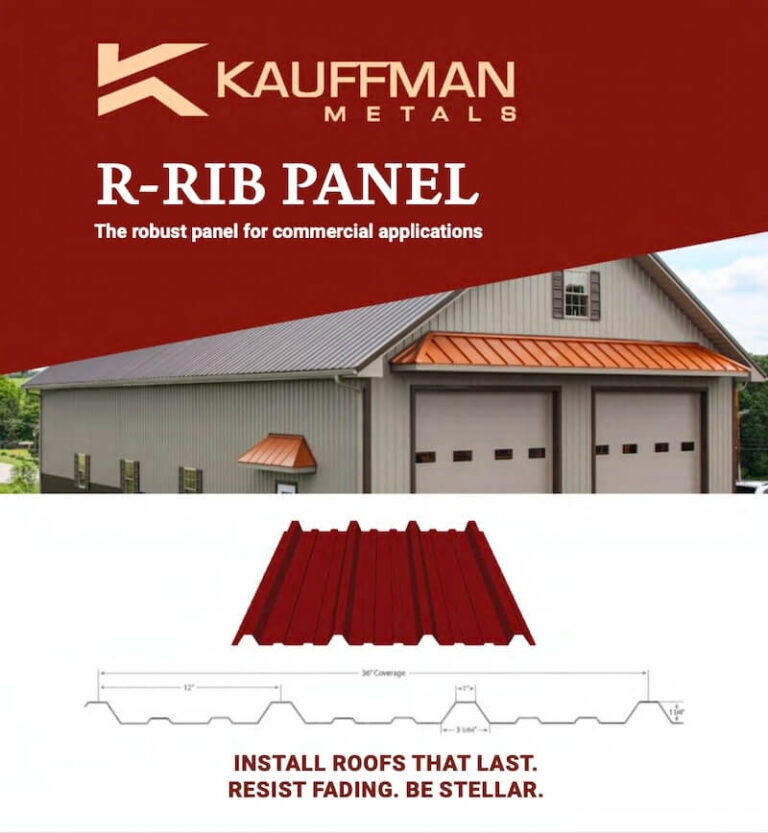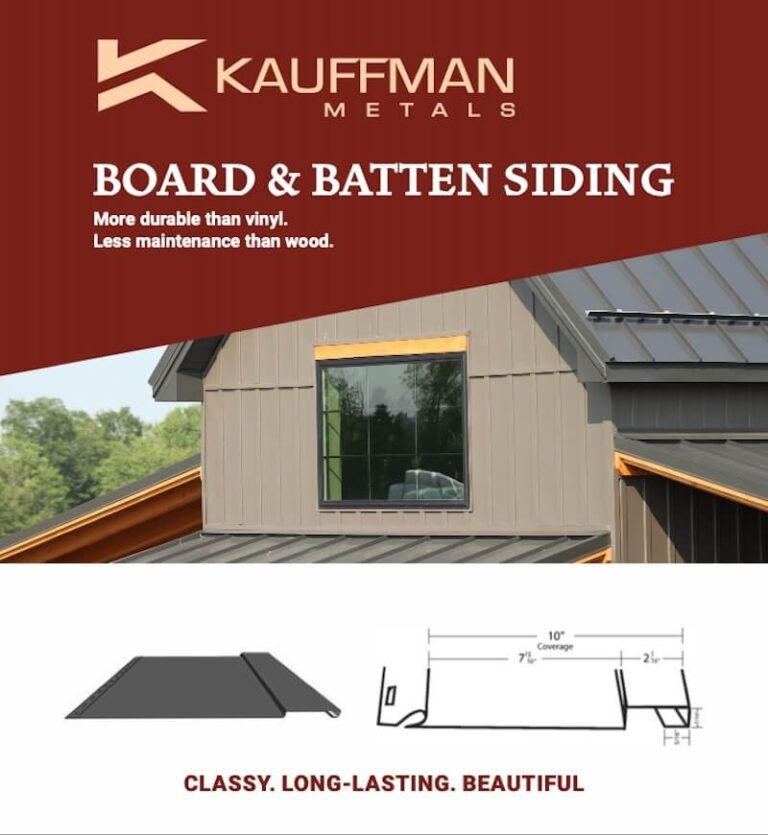Metal Trim Supplies
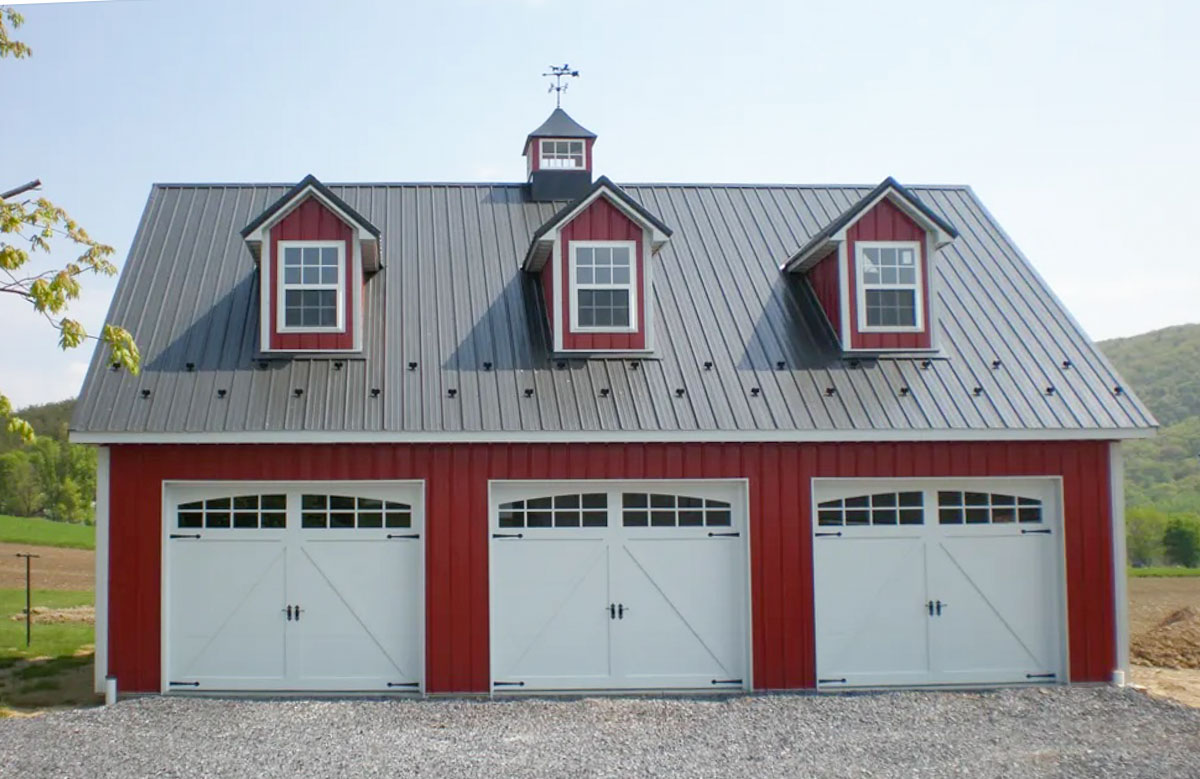
Trim is an essential part of a metal roof or siding system. It is part of what prevents leaks from occurring where two pieces of metal meet. It also has many aesthetic qualities.
We have trim to complement all of the metal panels we carry, and we can make custom trim for your needs. All that, plus fast turnaround. For some of the trim listed below, there will be several different profiles to choose from based on the look you desire.
For pictures of the trim that we offer, download the PDF for the specific metal panels you are considering.
Whether your project is simple or complex, Kauffman Metals wants to make it easy.
Step 1
Get a quote by email or by phone.
Step 2
Place your order.
Step 3
We'll quickly have your order ready for pickup or delivery.
Benefits of Metal Trim Supplies
Greater Durability
- With our lifetime transferrable warranty, building with our metal means long term savings.
Lightweight
- Metal is light in relation to its surface area. This means that buildings require fewer materials—roof trusses can be spaced further apart and purlins can be used instead of sheathing. For re-roofing, metal can often be put on top of the existing roof, saving removal costs.
Resistant to fire and wind
- Metal roofing resists fire extremely well and is designed to hold up in strong winds.
Energy efficiency
- Metal roofing reflects heat, reducing cooling costs in the summer.
Easy installation
- Metal’s large panels allow relatively quick installs by accomplished contractors or handy homeowners.
Many styles and colors
- Metal comes in a wide variety of styles, patterns, and colors, making it easy to match with your home or building’s design.
Metal Trim Supplies FAQs
How long does a metal roof or metal siding typically last?
Metal roofs and siding can last from 40-70 years, depending on the quality of materials and installation. They are known for their durability, resistance to environmental factors, and low-maintenance requirements compared to asphalt shingles.
How is standing seam different from other metal panels?
Standing seam is different from panels like G-rib and R-rib because its panels have concealed fasteners, providing a sleek, modern appearance and improved weather resistance. The other kinds of panels have exposed fasteners and more traditional, wavy patterns. Standing seam costs more to install, but those costs result in higher performance and greater aesthetics.
Can metal roofing and siding be installed over existing shingles or siding?
It is possible to install metal panels over existing roofing and siding. However, you must consider factors like the current materials’ condition, proper ventilation, and local building codes. It’s a good idea to check with a contractor to evaluate the situation before proceeding.
Are metal roofs and siding more energy-efficient than other materials?
Metal roofs and siding can be more energy-efficient than other materials because they are highly reflective. This reduces solar heat gain, leading to lower energy bills.
Can I install a metal roof or siding on my own, or should I hire a professional?
While some homeowners have the skills to install metal roofing and siding, it is usually better to hire a professional contractor since installation requires proper measuring, cutting, and fastening to ensure durability, weather resistance, and a quality appearance.
Find Kauffman Metals in beautiful Bedford County, PA!
We are conveniently located along Route 30 (Lincoln Highway) in Bedford, PA about 3 miles from exit 146 on I-76 (PA Turnpike).
We service about a 100-mile radius from our headquarters in Bedford, PA. That means our drivers cover parts of Maryland, Virginia, and West Virginia, in addition to our home state of Pennsylvania.
Our service area includes towns such as:
- Meyersdale, PA
- Keyser, WV
- Hancock, MD
- Berkeley Springs, WV
- Frederick, MD
- Hagerstown, MD
- Cumberland, MD.
